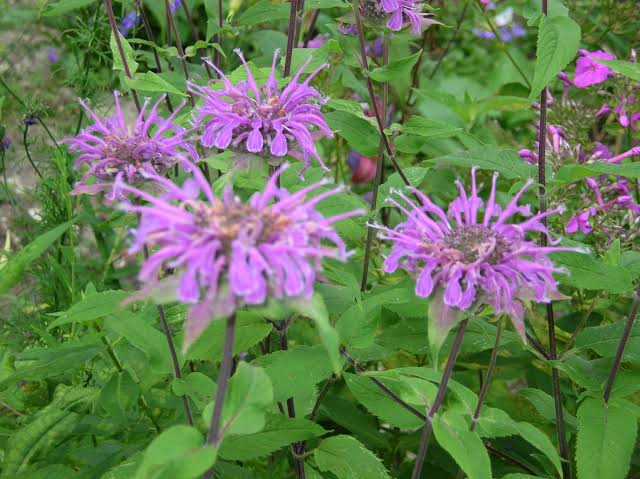
There are many different varieties of bee balm. The one I am specifically taking about today is Monarda Fistulosa. It is also known as Bergamot.
It is a native herbaceous perennial in the mint family that grows typically to 2-4 feet tall. It has a beautiful purple flower. Don’t confuse this with a bee balm called Monarda Didyma which has beautiful pink flowers.
Native American tribes used Monarda Fistulosa to treat a variety of ailments, including colds, fevers, headaches, and stomach pain. Today, the uses are:
Internal uses
- Colds and flu: The plant’s antibacterial properties can help with colds and flus.
- Digestive issues: The plant’s bitter qualities can help with indigestion, nausea, and flatulence.
- Sore throats: The plant can be used as a gargle to relieve sore throats.
- Fevers: The plant can help reduce low fevers.
- Lung infections: The plant can help with lung infections, bronchitis, and whooping cough.
- Urinary tract infections: The plant can help with urinary tract infections.
External uses
- Skin wounds: The plant’s essential oils have strong antiseptic properties that can help treat skin wounds.
- Headaches: The plant can be used as a poultice or inhaled as steam to relieve headaches.
- Sore eyes: The plant can be used as a wash for sore eyes.
- Burns: The plant can be used as a poultice for burns.
- Rheumatic pains: The plant can be used as a poultice for rheumatic pains.
As you can see, it has great medicinal benefits and I highly recommend you plant this in your yard today! It is not only medicinal but its beautiful!
If you want to purchase this herb, please consider using this affiliate link to purchase it. I highly recommend this link because of how they process and store herbs. You can’t always trust who you purchase from online, but with this company, I truly do feel it is top of the line and high quality. Just go to this link and type in ‘bergamot’.
If you would like to find out more about the author or learn about other herbs, please consider visiting this link.
Stay natural!
~Dr. Amanda P. Cartwright